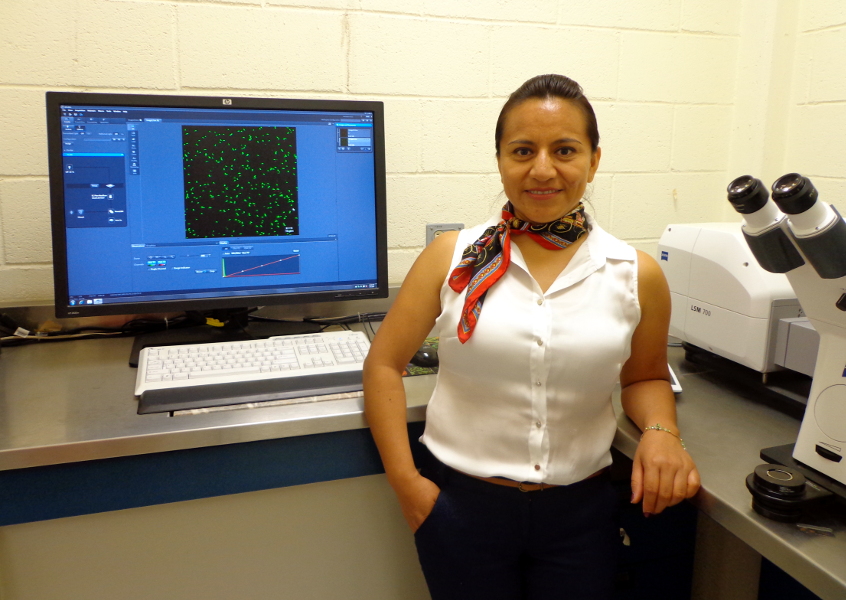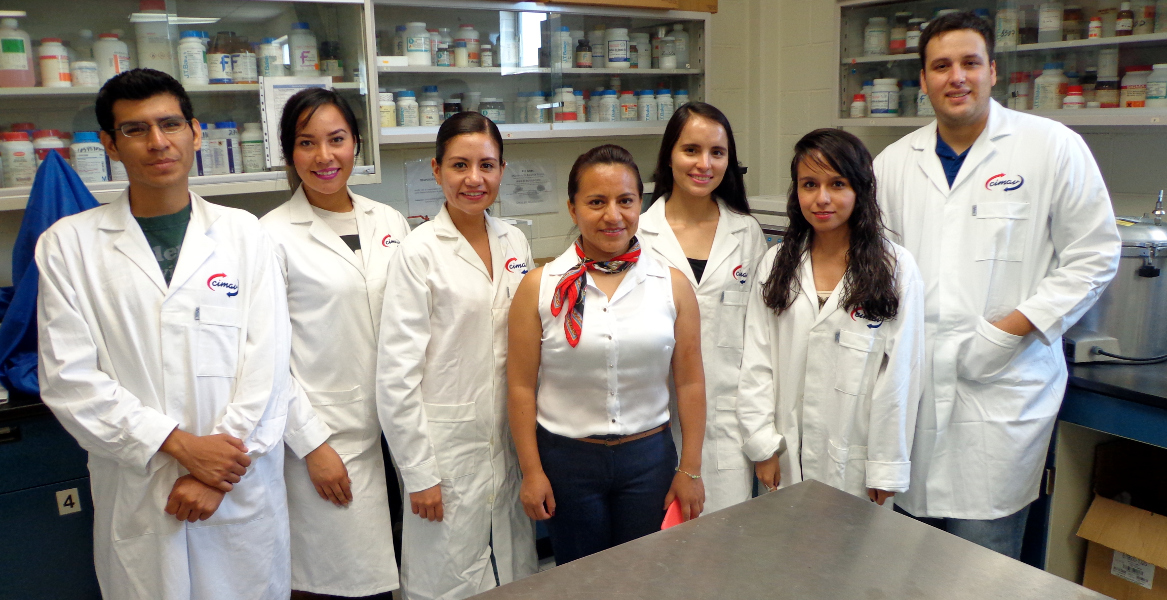Functional nanomaterials and cytotoxicity
Functionalization of nanomaterials
This research is focused in developing new treatments against breast cancer by designing functionalized nanomaterials as vehicles to transport drugs efficiently and direct to the target site. Thus, this delivery systems would minimize size effects caused by traditional forms of drugs used in chemotherapy treatments. Particularly in this kind of studies are used biocompatible nanomaterials like nanodiamonds and gold nanoparticles.
The in vitro evaluation of delivery systems is tested using human breast cancer cells as models, looking for the cell internalization of the systems, drug delivery and activity on target cells.
Nanomaterials cytotoxicity
The citotoxicity of emerging nanomaterials is also investigated for this research group, particularly for metal base nanomaterials with potential industrial applications and doped nanomaterials.
This studies are focused in assess the impact of nanomaterials in the environment and human health. In the first case, relevant environmental microorganism or environmental microenvironments (water sediments, soil matrices etc.) are used as as models. While in second case, different kind of human cells are used as models.

An important interest is also in evaluating the mechanisms of toxicity as structural and membrane damage, oxidation of cellular components, nanomaterials internalization, etc.
With this studies, we can identify nanomaterials with impact on the environment or with antimicrobial properties as well as those compatible with human cells and potential medical applications.
The nanomaterials evaluated are synthesized and well characterized physically and chemically (composition, size, morphology or charge) in collaboration with researches of Physycal Materials Department at Cimav. That allows to better understand the toxic effects.
Bioremediation of water
Cimav researchers also work in developing technologies to remediate water contamination, using biological treatments. These are based on anaerobic microorganisms, which are able to transform the contaminants such as heavy metals, arsenic, sulfate and nitrate, from its toxic for to its non toxic form.
The studies are performed in batch systems and continuous packed bioreactors with solid materials (e.g. iron, micro or nanometric size) to remove toxic elements from water. Packed bioreactors work as a porous reagent barrier through contaminated water cross and microorganisms transform mobile an toxic contaminants to their less mobile and thus there are retained in the solid matrix.
The microorganisms employed are normally adapted to the different contaminants and to particular environmental conditions (e.g. pH, temperature, etc.), which commonly enhance the performance of the process.
- Development of bio-conjugates base on nanomaterials and biomolecules.
e.g. Metallic nanoparticles with DNA markers to cancer diagnostics, Nanodiamonds with drugs to treat breast cancer cells. - Biological processes for water remediation.
Anaerobic bio-transformation of metals, arsenic and poly anions as nitrate, sulfate, etc. - Biofuels.
Based on algae biomass.
